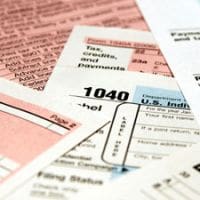The Problem
Compliance with the U.S. income tax carries visible and hidden costs for taxpayers, including not only the tax payment itself but also the hours spent gathering documents, reading instructions, and preparing forms—or paying someone else to do so. These compliance costs have been estimated at 10 percent of tax collections, considerably higher than is the case for other highly developed nations.
The Proposal
A phased-in simple return plan would allow the U.S. government to take advantage of the country’s information technology gains to lighten the tax compliance burden on an estimated 40 percent of American taxpayers. The voluntary plan would utilize the information that employers already send to the government and would benefit primarily those with low and middle levels of income who file relatively simple tax returns.
Abstract
The costs of complying with federal income tax requirements are large and are particularly unwelcome to many middle-class taxpayers whose tax situations are quite simple. Indeed, the data show that the costs of complying are regressive — lower, as a share of income, for wealthier taxpayers.
This paper proposes a program known as the “Simple Return,” which would make it much easier for the millions of taxpayers with a relatively simple tax status to file their taxes. The Simple Return might apply to as many as 40 percent of Americans, for whom it could save up to 225 million hours of time and more than $2 billion a year in tax preparation fees. Converting the time savings into a monetary value by multiplying the hours saved by the wage rates of typical taxpayers, the Simple Return system would be the equivalent of reducing the tax burden for this group by about $44 billion over ten years. A Government Accountability Office report estimated in 1996 that a plan similar to the one proposed here could save the IRS close to $36 million per year by reducing the number of errors in tax filings and the subsequent need for investigations.
Around two-thirds of taxpayers take only the standard deduction and do not itemize. Frequently, all of their income is solely from wages from one employer and interest income from one bank. For almost all of these people, the IRS already receives information about each of their sources of income directly from their employers and banks. The IRS then asks these same people to spend time gathering documents and filling out tax forms, or to spend money paying tax preparers to do it. In essence, these taxpayers are just copying into a tax return information that the IRS already receives independently. The Simple Return would have the IRS take the information about income directly from the employers and banks and, if the person's tax status were simple enough, send that taxpayer a return prefilled with the information. The program would be voluntary. Anyone who preferred to fill out his own tax form, or to pay a tax preparer to do it, would just throw the Simple Return away and file his taxes the way he does now. For the millions of taxpayers who could use the Simple Return, however, filing a tax return would entail nothing more than checking the numbers, signing the return, and then either sending a check or getting a refund.


